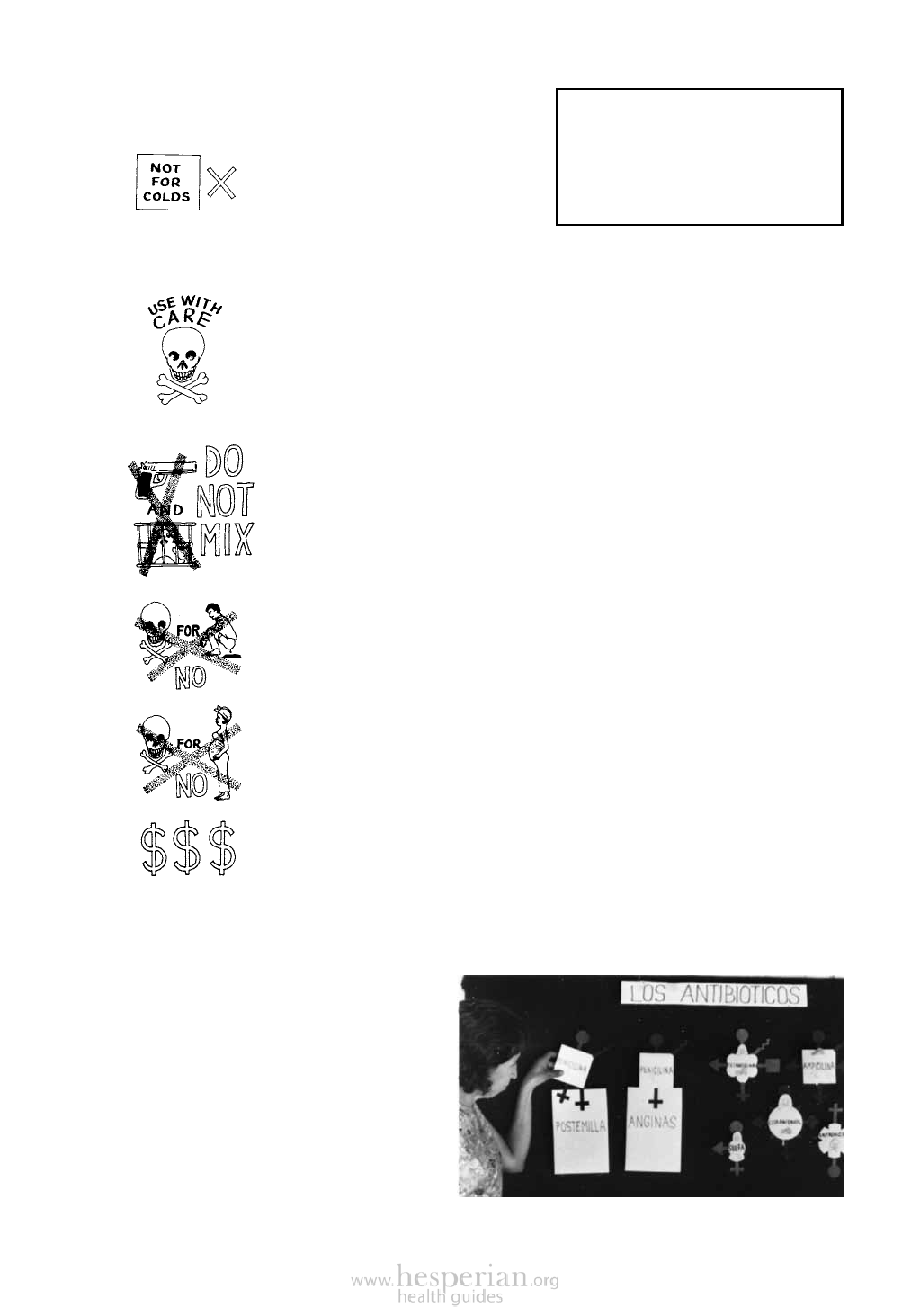
19-5
Additional guidelines for further learning:
5. USE ANTIBIOTICS ONLY FOR
BACTERIAL INFECTIONS!
Do not use them for
viral infections, because
antibiotics do nothing
against viruses (common cold,
measles, chicken pox, etc.).
Take care not to burden students
with too much at once. These
additional guidelines can be
introduced little by little when
playing the games and discussing
the uses of different antibiotics.
6. BE CAREFUL NEVER TO GIVE MORE THAN THE RECOMMENDED
DOSE OF A TOXIC (POISONOUS) ANTIBIOTIC. However, it is
usually not dangerous to give higher doses of an antibiotic that is not
poisonous (penicillin or ampicillin). For example, it is all right to use
penicillin for months or even years after it has expired, and to increase
the dose to allow for any loss of strength. (But tetracycline becomes
more poisonous when old. It should never be used beyond the
expiration date or in more than the recommended dose.)
7. DO NOT USE AN ANTIBIOTIC THAT SLOWS DOWN BACTERIA
TOGETHER WITH AN ANTIBIOTIC THAT KILLS THEM. The
combination is often less effective than one alone. (Once the bacteria
are captured or slowed, they stay hidden where the other antibiotics
cannot kill them.) For example, never use tetracycline in combination
with chloramphenicol.
8. WHENEVER POSSIBLE, AVOID USING A TOXIC MEDICINE FOR
A PERSON WITH DIARRHEA OR DEHYDRATION. A dehydrated
person’s body cannot get rid of poisons as quickly in the urine. Even
normal doses of a toxic medicine may build up and poison the person.
(Sulfas are especially risky for treating diarrhea. Unless the person is
making a lot of urine, sulfa can form crystals in the kidneys and cause
damage.)
9. DO NOT USE TOXIC MEDICINES DURING PREGNANCY—
ESPECIALLY DURING THE FIRST 3 MONTHS. Some medicines can
cause severe birth defects.
10. USE A MEDICINE THE FAMILY CAN AFFORD. When choosing
between medicines, always consider the relative cost, and weigh this
with other advantages and disadvantages.
THE SECOND LEARNING GAME
This game helps students use the
guidelines from the first learning game
to practice choosing antibiotics for
specific infections.
This game was last updated in 1995.
Some of the antibiotics shown no
longer work against the injections they
used to treat. But we hope that the
idea for the game will still be useful.
It is discussed in detail on the pages to
follow.
THE SECOND ANTIBIOTIC LEARNING GAME